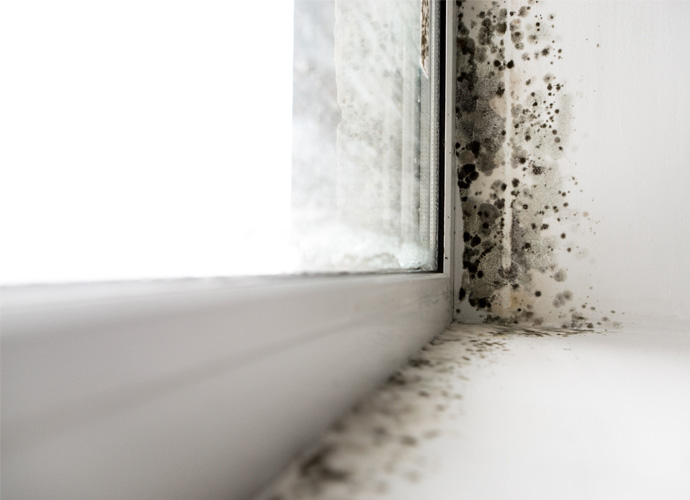In the rental sector, there are always grey areas that can lead to confusion and potentially tension between a tenant and a private landlord. One such area is mould in the property and who is responsible for dealing with it. Mould can affect the condition of a rental property, and addressing it promptly is essential to maintaining a safe and habitable environment.
There is no simple answer here, but we will talk through some common causes of mould, how to deal with them, and also who is likely to be responsible for remediating them. If you’re unsure about your rights and obligations, seeking legal advice can be a helpful step.

What causes mould?
Essentially, all mould is caused where there is water, warmth, and food such as wood, paper, carpets, or even paint. In a home, it is hard to remove the warmth and the “food,” as you need your carpets and wallpaper, but the moisture is a factor that can be controlled. So, where does it come from?
Condensation
Condensation is by far the most common cause of mould in a property. Condensation can lead to mould growth on wallpaper, paint in bathrooms and kitchens, windows, and woodwork. This is normally relatively easy to control by not allowing humidity in the air to increase and by mopping up any water before it becomes an issue. However, understanding who is responsible for sorting mould caused by condensation can be complicated:
- If the condensation is caused by the tenant not using extraction fans or failing to open windows to improve ventilation, the responsibility typically falls on the tenant. Inadequate ventilation often leads to a build-up of moisture, resulting in issues such as mould on cold surfaces.
- On the other hand, if the windows are in a poor condition, for example, double-glazed windows that have lost their integrity, the landlord is likely responsible for addressing the issue. Poor property maintenance in such cases is a contributing factor to mould growth.
The key here is to understand where the problem originates. If the tenant’s actions, such as drying clothes indoors without ventilation, are to blame, the tenant would need to take steps to resolve the issue. Conversely, if the issue stems from the condition of the property, such as poor ventilation or structural problems, the private landlord is responsible for addressing the root cause.
Rising Damp
Rising damp occurs when ground moisture seeps into the property through the walls. This is typically caused by a damaged or absent damp-proof course (DPC). Unless the tenant has deliberately interfered with the DPC, this issue would fall under the landlord’s responsibilities, as it relates to the condition of the property. Landlords should take steps to ensure that the property complies with legal standards for human habitation by addressing issues like rising damp promptly.
Penetrating Damp
Penetrating damp is where moisture enters the structure of the property, often due to factors such as plumbing leaks, missing roof tiles, leaking guttering, or poor flashing. These issues, if left unchecked, can lead to black mould. In most cases, these problems are the landlord’s responsibility to fix, as they are caused by the structural condition of the property.
However, there are exceptions:
- If a tenant has caused the issue, such as by puncturing a pipe while hanging a shelf, the tenant would be responsible for fixing the leak and addressing the resulting mould growth.
- For problems caused by external factors, such as leaking gutters or missing roof tiles, the landlord is responsible for ensuring timely property maintenance.
Routine inspections by landlords are essential to identify and address issues like poor ventilation, dampness, or cold surfaces before they result in mould. Acting within a reasonable period can prevent further damage and keep the property safe for tenants.
Although this is not a totally black-and-white area, the general rule of thumb is that tenants are responsible for managing condensation within the property to prevent mould caused by their actions or inaction. Landlords, however, are typically liable for damp and subsequent mould caused by the property’s condition, including inadequate ventilation or structural issues.
Both parties should work together to maintain the property’s habitability, minimising the need for legal action while safeguarding the health and wellbeing of everyone involved.






